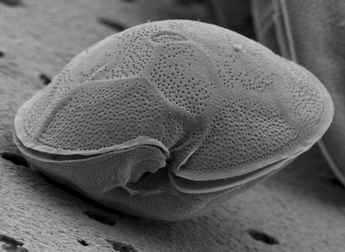 |
| A non-relevant crab. Nice photo though |
A few hints:
Read the question.
I mean really read the question. What is it asking you? Sometimes there might be a slab of information and a nice little diagram of say, a cellular response to insulin. But the question may be something like "Define homeostasis". You're not required to talk about insulin, biochem pathways, signal transduction. Its asking for a definition.
Rule out answers.
Sometimes you might get a multiple choice question you don't know. Instead of not answering, rule out answers that are definitely incorrect. If you know that A and D are NOT the answer, but you are unsure about B and C, just by ruling out two of the answers you've increase the chance of getting that question right from a 1 in 4 chance to a 1 in 2.
Limit your answers:
You've studied hard and when you come to the short answer question you want to demonstrate this. Try and hold back a little. If the question is worth 1 mark, they are after a term or word or definition. If the question is worth 2 marks the question requires you to answer two things. Writing a mini essay may make you feel better but the examiner does not want to know everything you know about hormones for example, but may just need to know that steroid hormones are lipid-based and the receptors for these are within the target cell. Writing slabs of information runs the risk of contradicting yourself (no marks), writing something that is incorrect (no marks) or running out of time for a later question (no marks). Be clear and concise.
Practice:
Do previous exams. As many as you can. And complete them under exam conditions. Limit yourself to 1.5hrs. Then go back and read the examiners report/check your answers. Make a list of questions you got wrong. Know why you got these wrong. Is the list similar over several different exams? Are there areas you need to revise? Don't do prac exams while listening to music. It makes it harder to recall the information without the music. Also, I don't believe in study groups. I don't think they benefit everybody equally and tend to waste a huge amount of time but that is a personal view.
Seek help:
See your teacher, ask for their help. And when seeking help ask specific questions. Rather than "explain immunity to me", perhaps a better approach might be "I'm a little confused over the difference between humoral and cell mediated immunity". If help is offered, take it. If it isn't offered, ask. And a couple of days before your exam is too late. See your teacher. Email them. Pester your tutor / older sibling at university / cousin Jimmy who is smart. Believe it or not, teachers love students who ask them questions or seek their help. It validates an otherwise meaningless existence. And for those of you who know me, email me anytime.
Don't study the night before:
If you don't know it by now, you are up the proverbial creek. You will get out of this exam a result proportional to the effort you have put in this year and over the last 13. Relax, watch TV, go out for dinner with a friend and get an early night. I suggest drinking several large mugs of chamomile tea before you go to bed. Might make you want to pee, but will help you sleep.
Believe in yourself:
You are awesome. Yep, you. Remember this always.
Good luck!
~~~~~~~~~~~~~~~~~~~~~~~~~~~~~~~
Here is a practice exam. Here is another. Answers for the first and second. And a third with answers.
Here is a link to the VCE study guide. Look at the dot points on pages 21 -23. This is what you need to know. Make a list of dot points for each of the points in the study guide.
Here is something I found online. It's a 37 page Unit 3 summary
And here is a link to podcast for the entire Unit 3. Return to this link as they'll be posted over Unit 4 as well.











